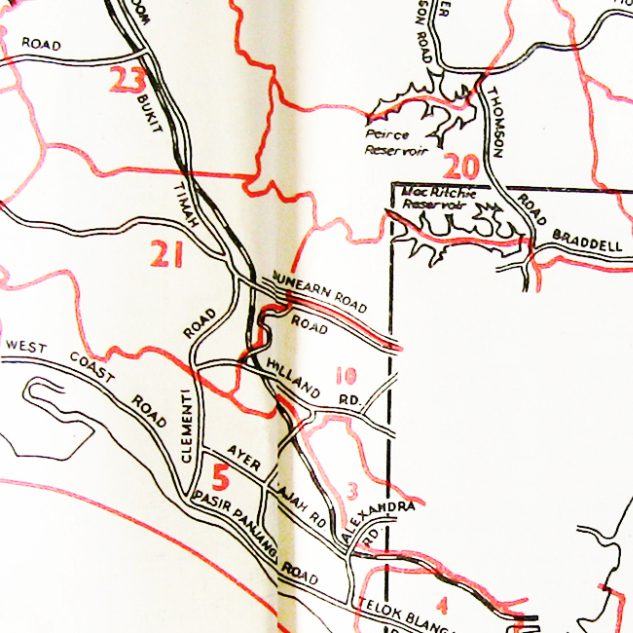
When the observer enters the space in which “Soundings” is installed, he enters a darkened space. Looking around, the observer sees his own reflection in the silvered panels. Sounds made by the viewer will trigger light points to illuminate parts of the silvered panel revealing coloured lithographs. The work is intriguing, alternately bewildering or for some- infuriating.
Intriguing because Rauschenberg (the individual and artist) has created a space (and not the “perfect object”) in such a way that the observer is required to shift his/her mode of interaction with the work to one of an active participant. No longer can the viewer simply retain his/her passivity in consuming the artwork(Rauschenberg has sought to expand the notions of art in his art practice), but the observer is now part of a two-way exchange between the artwork and its audience. This measure of interactivity is bewildering for many and has its semblance to what Roy Ascott wrote in his 1966 essay “Behaviourist Art and the Cybernetic Vision” that:
The vision of art has shifted from the field of objects to the field of behaviour, and its function has become less descriptive and more purposive.
No doubt “soundings” is an example of ‘the behavioural tendency in modern art’, as the interactivity between the artwork and the audience is no longer constrained by aesthetic canons or political directives, where an artwork can be a non-object and not solely determined by the artists/creator. The interactive artwork is now less prescriptive/descriptive and serves a purpose of getting the viewer to participate and with the interactivity- think and question his/her role in the experience of the artwork.
As quoted from the pivotal Museum of Modern Art (MOMA) Press Release for “Soundings”, he (Rauschenberg) insists that the viewer become his collaborator; without him/her the work does not exists. This forms a general characteristic of the modern artwork according to Ascott- that the dominant feature of art is one based on “interactivity”. As prophetically written by Norbert Wiener in “Cybernetics In History”:
messages between man and machines, between machines and man, and between machine and machine, are destined to play an ever-increasing role.
This concept is clearly anticipated in “Soundings” as the darkened space forces a communication between the artwork and the spectator. Art is no longer about transmitting a presupposed or intended message of the artists, but is is now more about the mechanisms of “feedback” and mutual control. When we look at our state of affairs in the 21st century, it is astounding how Wiener has foreseen future developments of message and communication facilities to go ‘out of control’ or beyond a state of entropy. in a clever use of technology, Rauschenberg has highlighted Wiener’s writing on how Cybernetics could and will play an increasing role in communication.
This vision of a changing world influenced by machines is thus cleverly played out in the experience of Rauschenberg’s “Soundings”. In this respect, this exhibition at MOMA sheds light on Rauschenberg’s legacy as a founding member of E.A.T.―which was initiated to allow the public interaction with lab-based computer engineering and technology and his importance in the history of cybernetics and art. In particular, this exhibition has focused on Rauschenberg’s responsive environment, in which a new mode of ‘spectatorship’ or a new relationship among spectator, the environment and technology was achieved. Further taken from the “Soundings” Press Release, Rauschenberg is said to:
merge art and technology … to confront the public with the present. Soundings continues to use the vocabulary of commonplace objects and to dissolve what he considers the needless separateness between man and technology.
It is with this that we see the multimedia and multi-modal artwork “Soundings” as an example of Rauschenberg’s incorporation of technology and machine aesthetics (in having the work be electronically activated and what the viewer sees dependent on his/her voice and sounds made) in Modern Art as prophetic of the future to come and is an artist way ahead of his time. Together with his oeuvre of other iconic artworks, Rauschenberg has profoundly influenced artists in future generations who increasingly incorporate more complex media and technology in their works. Where contemporary art sits on a cusp of uncertainty where the art system is constantly driven by entropy and market forces, Rauschenberg was one to see it happening- 50 years earlier.




